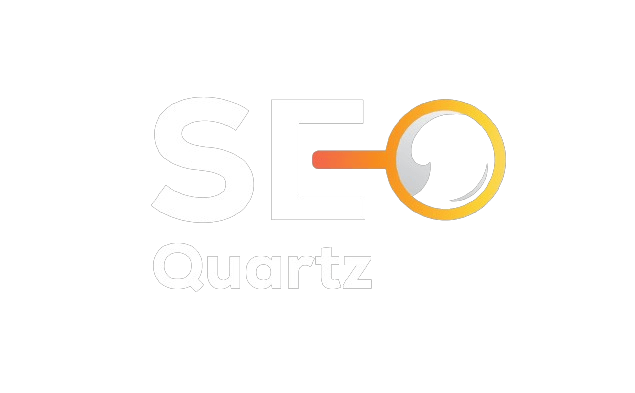How to Optimize for Google Maps & Local Packs in a Voice-First World
AI SEO Checklist: How to Rank on ChatGPT & Google SGE
AI SEO Checklist: How to Rank on ChatGPT & Google SGE
In the fast-moving world of search, AI SEO is no longer optional—it’s essential. With the emergence of ChatGPT, Perplexity AI, and Google’s Search Generative Experience (SGE), the rules of visibility are being rewritten. To win in this AI-first world, you need a strategy tailored to how generative engines pull, parse, and present content. This is where the AI SEO checklist, Generative Engine Optimization (GEO), and Answer Engine Optimization (AEO) come into play. Let’s dive into how to optimize content for AI bots and increase your AI content visibility on both ChatGPT and Google SGE in 2025.
What is Generative Engine Optimization (GEO)?
Generative Engine Optimization (GEO) is the process of preparing content for AI-driven tools like ChatGPT and Google SGE. Unlike traditional SEO, which focuses on ranking on search engine result pages (SERPs), GEO targets answer engines that generate direct responses using large language models (LLMs).
GEO vs Traditional SEO:
| Feature | Traditional SEO | GEO (AI SEO) |
| Search format | Link-based search | Answer-based generation |
| Keyword focus | Short-tail & meta tags | Long-tail & question-based phrasing |
| Ranking mechanism | Backlinks & signals | Authority, clarity & structure |
Why GEO Matters:
- AI engines don’t scroll pages—they extract content directly.
- Being cited by ChatGPT or Perplexity boosts trust and traffic.
- Google SGE now summarizes content and links to sources with schema-rich data.
SEO Tip: Use schema markup like <FAQPage> or <HowTo> to help AI understand your content structure.
AI SEO Checklist: How to Rank on ChatGPT & Google SGE
Use this practical AI SEO checklist to boost your presence on both ChatGPT and Google’s AI-powered search features.
1. Use Clear, Concise Answers
- Write answers in short paragraphs (2–3 lines max).
- Use bullet points or numbered lists.
- Target natural-language queries like “how do I rank on ChatGPT?” or “what is generative engine optimization?”
This boosts both AI content visibility and zero-click potential.
2. Add FAQ Schema Markup
- Embed FAQs using JSON-LD or schema-enabled plugins.
- Add 3–5 relevant questions at the end of each post.
3. Structure Your Content Logically
- Use H2 and H3 headers as questions (just like this checklist).
- Google SGE prefers structured Q&A-style formatting.
4. Build Topical Authority
- Interlink related content with consistent anchors.
- Add author bios with credentials or experience.
- Cite statistics, data, or case studies.
This builds trust with both humans and AI bots.
5. Use AI-Friendly Metadata
- Set up robots.txt and llms.txt to allow AI access.
- Add structured data for AI, including:
- Article
- FAQPage
- HowTo
Optimize title tags and meta descriptions using natural language.
6. Optimize for Voice & Zero-Click Results
- Answer key questions in under 40 words.
- Add a TL;DR summary at the top of each post.
- Include long-tail keywords like “how to rank on ChatGPT in 2025.”
7. Add Multimedia (Optional)
- Embed short videos, diagrams, or summary infographics.
- Use captions and alt-text that include keywords like AI SEO checklist or Google SGE SEO tips.
Tools to Help with AI SEO
Implementing GEO and AEO strategies is easier with the right stack. Here are some essential tools:
- Surfer SEO – Optimize on-page SEO for LLM readability
- Frase.io – Structure your content around real user questions
- Yoast SEO + Schema Pro Plugin – Add structured data for AI easily
- ChatGPT + Bing Search Preview – See what responses pull your content
- Google Search Console & SGE Labs – Monitor impressions and AI citations
Real-World Example: Ranking on SGE & ChatGPT
Imagine a blog post titled “What is Answer Engine Optimization?”. After applying the AI SEO checklist, it:
- Included a TL;DR summary and FAQ schema
- Answered key queries in under 40 words
- Linked to related topics on GEO and AI SEO
Before:
- 300 monthly pageviews
- 0 citations in generative engines
After:
- 1,500+ monthly pageviews
- Featured in both Google SGE and ChatGPT’s sourced answers
This shows how structured, optimized content ranks on ChatGPT and wins AI snippets.
Conclusion: 7 Steps to AI SEO Success
To succeed in 2025 and beyond, your SEO strategy must evolve. Here’s a recap of the key steps:
- Use concise, clear answers
- Add FAQ and HowTo schema markup
- Structure content with H2/H3 questions
- Build authority with internal links and bios
- Implement metadata and structured data for AI
- Optimize for voice search and zero-click results
- Enhance content with visuals
Looking for more? Explore our guide: AEO vs SEO: What’s the Difference?
Need help optimizing your content for AI engines?
Download our AI SEO Template or book a consultation with our team. Whether it’s how to rank on ChatGPT, improve your AI content visibility, or apply Google SGE SEO tips, we’ve got you covered.
Frequently Asked Questions (FAQ)
What is AI SEO?
AI SEO refers to optimizing content for artificial intelligence-driven engines like ChatGPT and Google SGE. It involves structure, clarity, schema, and authority signals.
How is GEO different from traditional SEO?
GEO focuses on AI-powered search responses, while traditional SEO targets SERP rankings. GEO emphasizes concise answers, schema markup, and natural language queries.
How do I add structured data for AI?
Use schema.org markup formats like <FAQPage>, <Article>, or <HowTo>. Tools like Yoast or Schema Pro can automate this for you.
What’s the easiest way to optimize content for AI bots?
Start with this AI SEO checklist, use long-tail questions, and add structured schema. Focus on helping the AI understand, not just ranking in Google.
 info@seoquartz.co
info@seoquartz.co
 +1 (276) 739-9962
+1 (276) 739-9962










